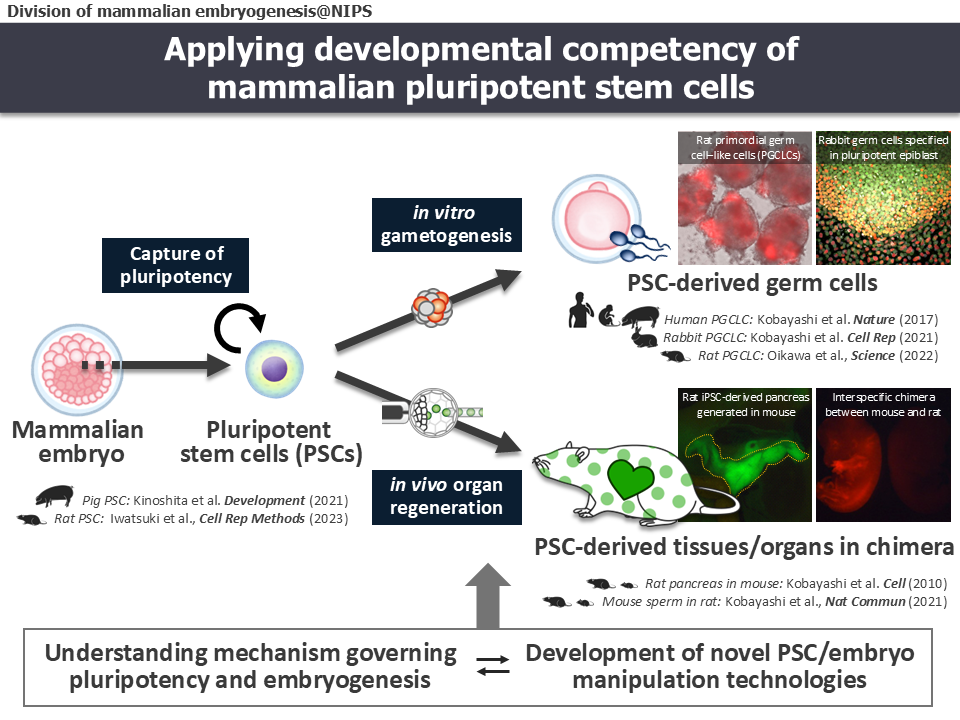Member
In vitro gametogenesis in various mammals
In vitro, the generation of germ cells from pluripotent stem cells (PSCs) can crucially impact future reproductive medicine and animal breeding. A decade ago, in vitro gametogenesis was established in the mouse. However, the induction of primordial germ cell-like cells (PGCLCs) to produce fertile gametes had not been achieved in any other species. In addition, we demonstrated some key differences between mouse and human germline specification. In our lab, we aim to develop in vitro systems to induce PGCLCs in various mammals including rats and rabbits. Furthermore, by using these systems, we study the conserved or species-specific mechanisms underlying pluripotency transition, germline specification, and subsequent development.
In vivo organ generation via blastocyst complementation
The generation of human organs in model animals allows us not only to provide a disease model that reflects human disease and pathology but also to become a source for organ transplantation in future regenerative medicine. As an approach to achieve it, we have developed the “blastocyst complementation” method which can create an organ in an animal by injecting PSCs into preimplantation embryos derived from organ-deficient animals. To demonstrate the proof of principle, we previously demonstrated the successful generation of rat iPSC-derived pancreas in pancreas-deficient mice. Since then, we and others have shown the generation of kidneys, thymus, and germ cells via blastocyst complementation using mouse and rat models. In our lab, we attempt to develop novel culture systems or embryo manipulation techniques applicable for blastocyst complementation.
 Fig.
Fig.
Overview of our research. Our lab aims to understand mechanisms underlying the cell fate decisions in early mammalian embryos and to apply their principle for future reproductive and regenerative medicine. In particular, we use pluripotent stem cells and early embryos from various mammals, which will enable us to investigate conserved mechanisms among the mammals and to develop novel technology by the use of species-specific features.
Selected publications
*K. Iwatsuki et al., Cell Rep Methods. 3, 100542 (2023).
*M. Oikawa et al., Science 376, 176 (2022).
*T. Kobayashi et al., Cell Rep. 37, 109812 (2021).
*T. Kobayashi et al., Nat Commun. 12, 1328 (2021).
*T. Kobayashi et al., Nature 546, 416 (2017).
*T. Kobayashi et al., Cell 142, 787 (2010).
